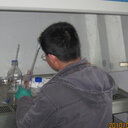Antioxidative dietary compounds modulate gene expression associated with apoptosis, DNA repair, inhibition of cell proliferation and migration.
الكلمات الدالة
نبذة مختصرة
Many dietary compounds are known to have health benefits owing to their antioxidative and anti-inflammatory properties. To determine the molecular mechanism of these food-derived compounds, we analyzed their effect on various genes related to cell apoptosis, DNA damage and repair, oxidation and inflammation using in vitro cell culture assays. This review further tests the hypothesis proposed previously that downstream products of COX-2 (cyclooxygenase-2) called electrophilic oxo-derivatives induce antioxidant responsive elements (ARE), which leads to cell proliferation under antioxidative conditions. Our findings support this hypothesis and show that cell proliferation was inhibited when COX-2 was down-regulated by polyphenols and polysaccharides. Flattened macrophage morphology was also observed following the induction of cytokine production by polysaccharides extracted from viili, a traditional Nordic fermented dairy product. Coix lacryma-jobi (coix) polysaccharides were found to reduce mitochondrial membrane potential and induce caspase-3- and 9-mediated apoptosis. In contrast, polyphenols from blueberries were involved in the ultraviolet-activated p53/Gadd45/MDM2 DNA repair system by restoring the cell membrane potential. Inhibition of hypoxia-inducible factor-1 by saponin extracts of ginsenoside (Ginsen) and Gynostemma and inhibition of S100A4 by coix polysaccharides inhibited cancer cell migration and invasion. These observations suggest that antioxidants and changes in cell membrane potential are the major driving forces that transfer signals through the cell membrane into the cytosol and nucleus, triggering gene expression, changes in cell proliferation and the induction of apoptosis or DNA repair.



